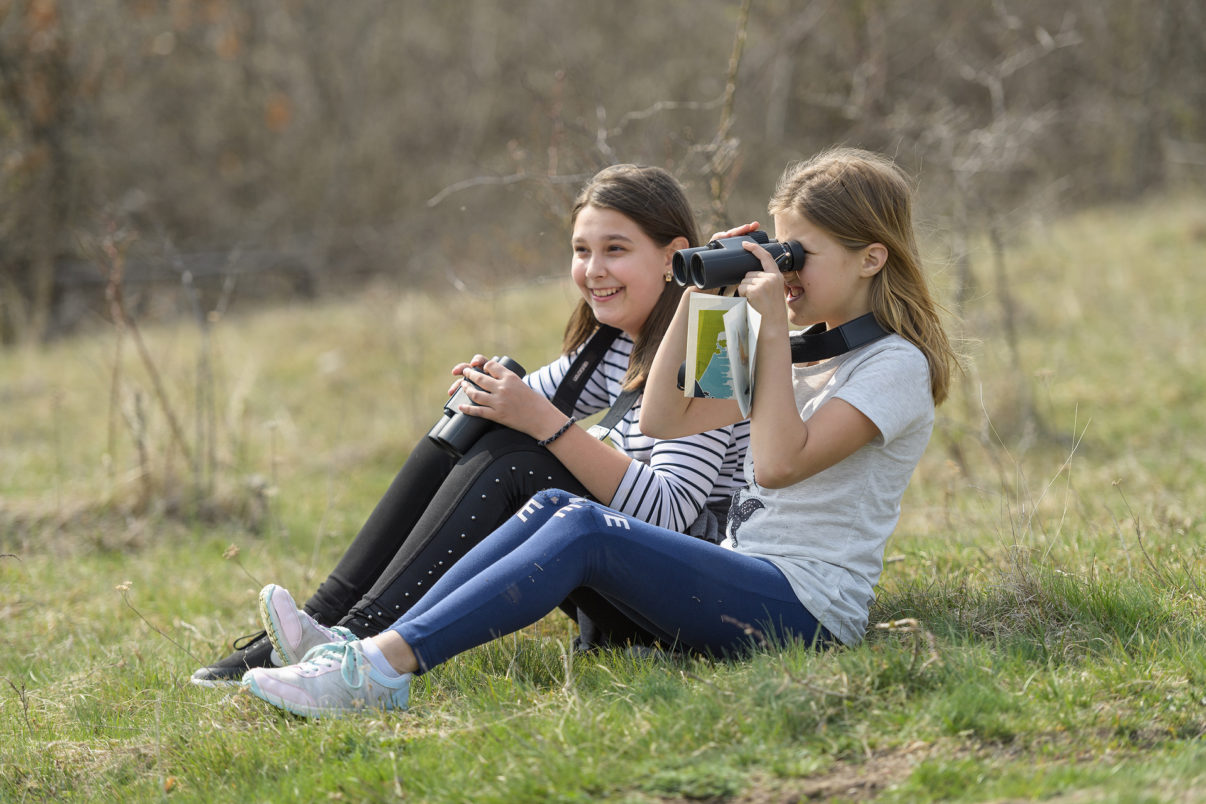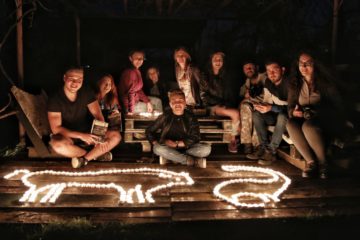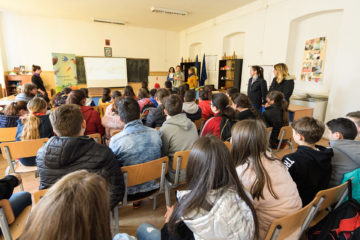Today rewilding is playing an increasingly important role connecting younger generations with wild nature. Romanian schoolchildren in Rewilding Europe’s Southern Carpathians rewilding areas recently celebrated Earth Hour and International Bird Day, strengthening their bond with local populations of birds and reintroduced bison.

Making the connection
As Europeans we are blessed to be surrounded by some of the most fascinating and dramatic wild nature on the planet. Today, with its positive message and emphasis on practical conservation, rewilding is playing an increasingly important role connecting younger generations with that nature, inspiring the next generation of European conservationists in the process.
Overseen by the local rewilding team and WWF Romania, an ambitious education programme in the Southern Carpathians is now involving a growing number of young Romanians with the wild nature on their doorstep. The programme, which has seen youth clubs known as “TANZ” created in a number of schools at both bison release sites, is part of a vision for using nature to drive regional development, with a particular focus on the European bison currently being reintroduced in the region by Rewilding Europe and WWF Romania.
Children in the TANZ clubs at both release sites recently celebrated Earth Hour (March 30 between 2030 and 2130) and International Bird Day (April 1), helping to strengthen their bond with local bison populations and birdlife, and to further kindle their love for and interest in nature.
A special sixty minutes
To celebrate Earth Hour, all five TANZ clubs took part in activities to raise awareness of climate change in their community, and learned how small-scale action can still benefit our lives and wild nature.

In the villages of Armeniș and Feneș, teachers organised a bicycle race and created a huge bison shape out of candles, which were then lit by the children. In the village of Teregova, children decorated glass jars containing candles with images of nature, and then walked through the streets holding the jars and singing traditional folk songs. Children in the villages of Densuș, Sarmizegetusa and Hațeg lit candles in the form of bison, as well as in the shape of a “60+”, in order to promote the idea of helping nature throughout the year.
In addition, all the TANZ club students received colourful leaflets containing simple information on how they and the wider community could lessen their impact on nature.
Awe-inspiring ornithology
International Bird Day was also celebrated by the TANZ students, with birdwatching workshops organised in both areas. Two biologists from the Romanian Ornithological Society (SOR) – Dora Domsa and Kinga Cimpan – captured the hearts and minds of the eager young nature lovers with lively presentations on bird migration. Workshop participants also learned how to help birds survive harsh winters by making artificial feeders.

The highlight of each workshop came when students left the classroom. Using pairs of binoculars lent by SOR, they were thrilled to spot small birds in the undergrowth such as robins, blue tits, sparrows and goldfinches, and birds of prey such as falcons in the sky overhead.
Children were also invited to record details of their observations on the Spring Alive website, paving the way for them to become future researchers.
Community outreach
Starting at the beginning of the school year last September, all the TANZ students have been working hard on long-term projects that can benefit their community and wild nature. The TANZ club in Sarmizegetusa, for example, is planning an extended recycling campaign in partnership with the local authorities, who have already installed recycling bins. The children are now working to inform their local community about how to recycle various materials, and the benefits that this can bring.
The TANZ club in Teregova are focusing their efforts on keeping rivers clean, while in Densus the students are designing nests for both local and migratory birds.
By the end of June the hard work of all the TANZ students will come to fruition, and their efforts will be celebrated, together with the professors who guided them.
Back from the brink
Once widespread across Europe, wild European bison were driven to extinction in the early twentieth century by hunting and habitat loss. Since 2013, Rewilding Europe and WWF Romania have been working together in the Southern Carpathians rewilding area to reestablish free-roaming populations of this iconic animal.
The first two bison releases took place in 2014 and 2015 in the Țarcu Mountains, close to the small town of Armeniș. In June 2016, a third bison release took place here as part of the European Commission-funded LIFE Bison project, with annual releases now ongoing. Earlier in 2018 another 23 bison were released into the wild, including 14 animals at a second rewilding site in the Poiana Ruscă Mountains.
The overall objective of the LIFE Bison project, which runs until December 2020, is to establish a wild bison population that is demographically and genetically viable in the Southern Carpathians. These animals are being sourced from zoos, breeding centres and nature reserves across Europe, and also from Romanian reserves such as Vama Buzăulu.
Learn more
- Rewilding Europe’s work in the Southern Carpathians.
- LIFE Bison project.
- Track reintroduced bison in the Southern Carpathians through the European Safari Company.
